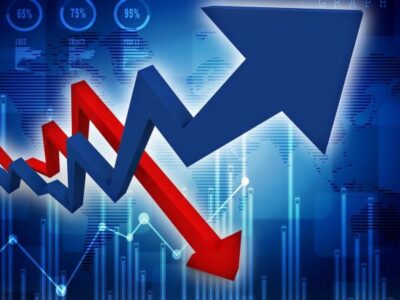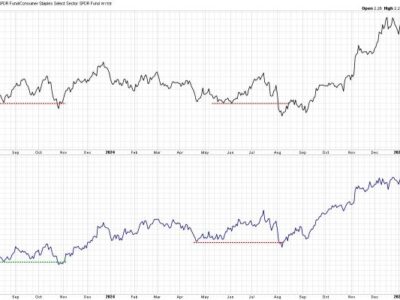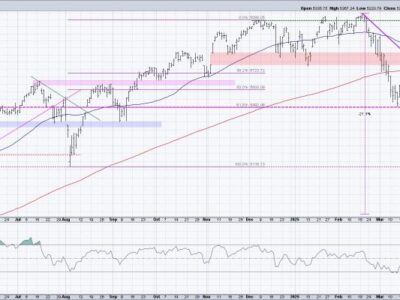
Senator Bill Cassidy (R‑LA) wants to slap a tariff on carbon‐intensive imports. Last week he told reporters: “What we’re proposing is not a domestic carbon tax, and it is not intended to lead to a domestic carbon tax.” In an article published by Foreign Affairs, Senator Cassidy referred to his carbon tariff policy as a “foreign pollution fee.” One may quibble with the labels, but three things are clear: 1) Senator Cassidy’s proposal is a carbon tax on imports, 2) it will hurt American consumers and some manufacturers, and 3) it lays the groundwork for a domestic carbon tax.
What’s in a Name?
Let’s begin by defining the terms “tariff,” “fee,” and “tax.” According to Merriam‐Webster, a tariff is “a schedule of duties imposed by a government on imported or in some countries exported goods.” Merriam‐Webster defines a fee (in the payment context, not the real estate ownership context) as “a fixed charge.” Likewise, Merriam‐Webster defines a tax as “a charge usually of money imposed by authority on persons or property for public purposes.”
Whether we use the terms tariff, fee, tax, duty, or charge is a matter of semantics. I prefer to use the word tax because people know what a tax is—and a tariff is just a tax on imports. No matter how you slice it or which name you give it, Senator Cassidy’s proposal boils down to the federal government taxing imports based on their carbon intensity. It’s a carbon tax. It may only apply to a narrow set of energy‐intensive imported goods, but the partial application of a carbon tax doesn’t change the fact that it’s a carbon tax.
[Note: I’m intentionally leaving out the word “dioxide” after carbon for brevity—the compound in question is carbon dioxide or CO2 (or CO2 equivalents in the form of other greenhouse gases).]
Taxing Imports Hurts American Consumers
Senator Cassidy’s plan would establish an import tax based on the carbon intensity of certain imported goods, such as steel from China. Although his Foreign Affairs piece does not mention the level of the tariff or the specific industries and countries involved (apart from targeting China), we know how tariffs tend to reduce the quantity of imported goods and raise prices for consumers.
The economic case against a carbon tax on imports mirrors the case against tariffs in general. Tellingly, the Foreign Affairs piece takes the perspective of American manufacturers of tariff‐targeted goods rather than consumers (note that Senator Cassidy’s tariff would also hurt domestic manufacturers who use imported steel in their manufacturing process). The Foreign Affairs article refers to “manufacturing” or “manufacturers” more than a dozen times while failing to mention consumers.
An early passage in the article illustrates its anti‐consumer bias:
The difference in environmental regulation enforcement between China and the United States lowers the cost of manufacturing in China, thereby encouraging US manufacturing and the jobs associated with it to migrate overseas. Such losses for the United States’ economy put downward pressure on its industrial base and American standards of living.
Low‐cost manufacturing in other countries challenges domestic manufacturing. I do not dispute that point. I disagree, however, when the senator characterizes low‐cost manufacturing in China as a loss “for the United States’ economy.” American consumers (including consumers of imported materials, some of which are manufacturers themselves) are also part of the economy. Consider this quote from French economist Frederic Bastiat:
There is a fundamental antagonism between the seller and the buyer. The seller wants the goods on the market to be scarce, in short supply, and expensive. The latter wants them abundant, in plentiful supply, and cheap. Our [trade] laws, which should at least be neutral, take the side of the seller against the buyer, of the producer against the consumer, of high prices against low prices, of scarcity against abundance.
A carbon tax on imports would hurt consumers just like other tariff protections enacted on behalf of domestic producers. Cato scholars have pointed out how “the US government systematically ignores consumer or broader ‘public interest’ impact when imposing trade remedy taxes on imports.” Given the lack of attention paid to the consumer by lawmakers, it is no surprise that so many companies can successfully lobby for tariff protection at the expense of consumers. Unfortunately, the consumer is missing from Senator Cassidy’s analysis.
Getting Closer to a Domestic Carbon Tax
Despite Senator Cassidy’s claim that his foreign pollution fee “is not intended to lead to a domestic carbon tax,” that is exactly what it would do, for at least three reasons. First, the foreign pollution fee concept may not be workable under World Trade Organization (WTO) rules without a domestic carbon tax. Second, applying a carbon tax on imports would require a new bureaucracy to keep tabs on the carbon intensity of traded goods. Third, a carbon tax on imports would require translating carbon emissions into dollar amounts, which is one of the biggest hurdles faced by advocates of a domestic carbon tax.
Regarding WTO rules, the CLC stated in a September 2023 report:
Commentators and some countries have raised concerns about the consistency of these measures with the rules of the [WTO], particularly to the extent that they rely on national average carbon intensity values for covered products, are not paired with a domestic carbon price, or attempt to address concerns about economic competitiveness in addition to reducing greenhouse gas emissions.
If advocates of a foreign pollution fee are faced with the choice of pairing it with a domestic carbon tax to satisfy WTO rules or dropping the scheme, which will they choose?
Regarding the new bureaucracy needed to count carbon, Senator Cassidy and others have drafted legislation called the PROVE IT Act to clear that hurdle. The PROVE IT Act would establish the Department of Energy as the carbon counter in chief. The act was introduced by Senators Chris Coons (D‑DE) and Kevin Cramer (R‑ND) and co‐sponsored by Senator Cassidy along with Senators Angus King (I‑ME), Lisa Murkowski (R‑AK), Martin Heinrich (D‑NM), Lindsey Graham (R‑SC), Sheldon Whitehouse (D‑RI), and John Hickenlooper (D‑CO). This looks like a “who’s who” of bipartisan carbon taxers, but don’t take my word for it. The pro‐carbon tax Niskanen Center said:
If the PROVE IT Act becomes law, it will be a meaningful step toward collecting product‐level emissions data. Getting better at measuring, reporting, and validating product‐level emissions is critical for implementing a border adjustment under a carbon tax.
Regarding the level of the carbon tax on imports, any legislative proposal (or the agency implementing it) will have to come up with a dollar amount to tax carbon dioxide emissions. Economists believe this is an all‐important step—according to Pigouvian theory, the level of the tax determines whether it increases or decreases social welfare. But the “correct” level of a carbon tax is difficult to estimate and depends on a host of politically charged decisions, like how to count costs (and benefits) and whether to weigh impacts in the distant future heavily (by applying a low discount rate) or lightly (by applying a high discount rate).
Critics of carbon pricing are correct to point out that the “correct” level of the tax—the marginal social cost of carbon emissions—is so dependent on input assumptions as to be useless in guiding public policy. A neutral perspective might be that there is a lot of wiggle room. Interestingly, carbon tax supporters admit the same thing:
There is considerable uncertainty about the magnitude of the social cost of carbon. Under the Obama administration, a task force consisting of 12 US government agencies was put together to employ several climate‐economy models and come up with an estimate of the social cost of carbon. They came up with a range—actually, a very wide range. They couldn’t rule out the possibility of a near zero social cost or a cost of around $100 a ton.
Further, establishing the level of carbon tax through protectionist trade policy almost guarantees the process will be guided by politics rather than a thorough, scientific, and economically informed attempt to price carbon at the marginal social cost of emissions. I predict that whatever carbon price is implied in defining the “foreign pollution fee” in Senator Cassidy’s plan will be held up by advocates of a domestic carbon tax, who will say “Aha! This is the magic number we’ve been looking for!”
Conclusion
Senator Cassidy’s foreign pollution fee proposal is a carbon tax on imports, and it would hurt consumers just like other tariffs. Contrary to the senator’s stated intentions, it would take us one step closer to a domestic carbon tax—one based on protectionist trade policy rather than environmental economics.








